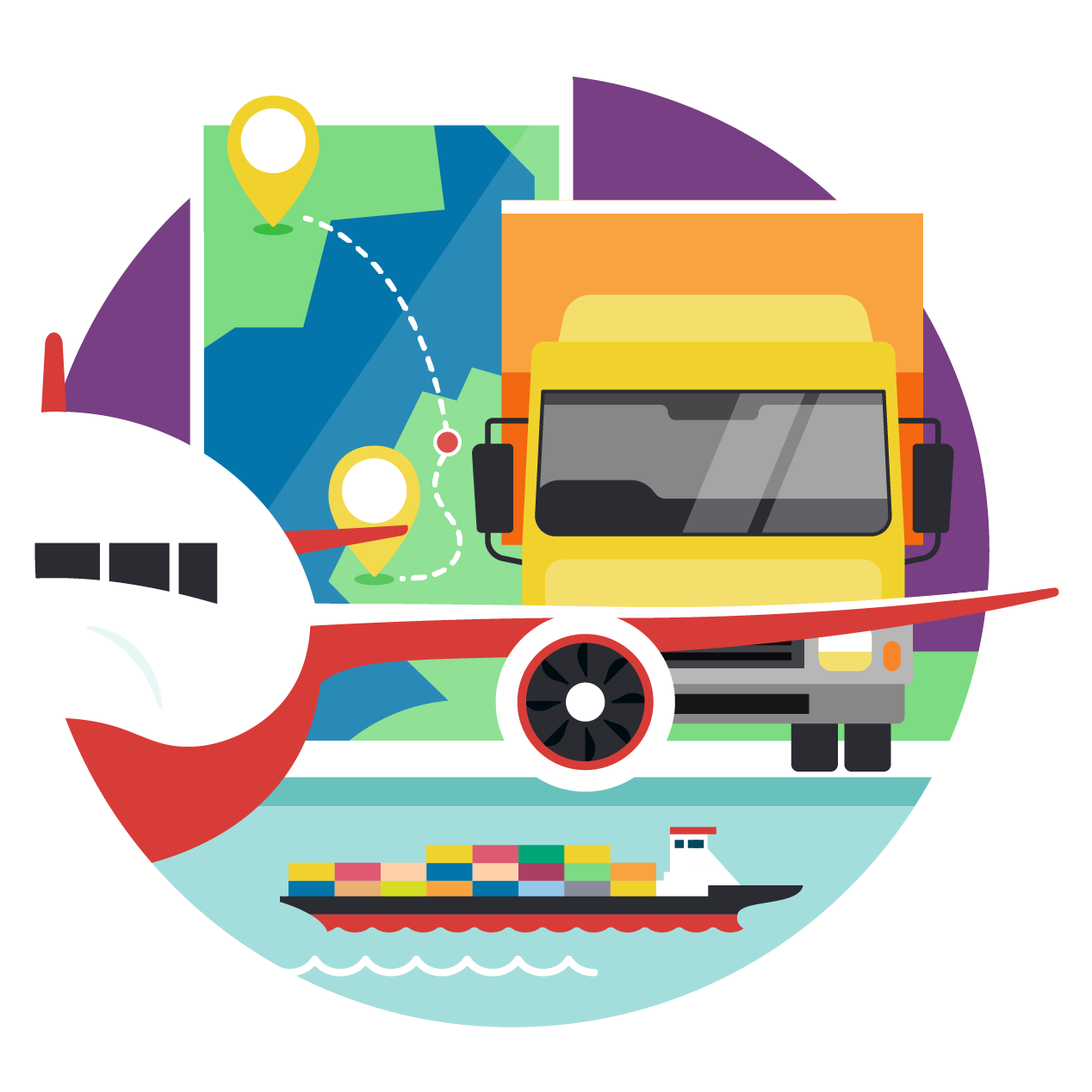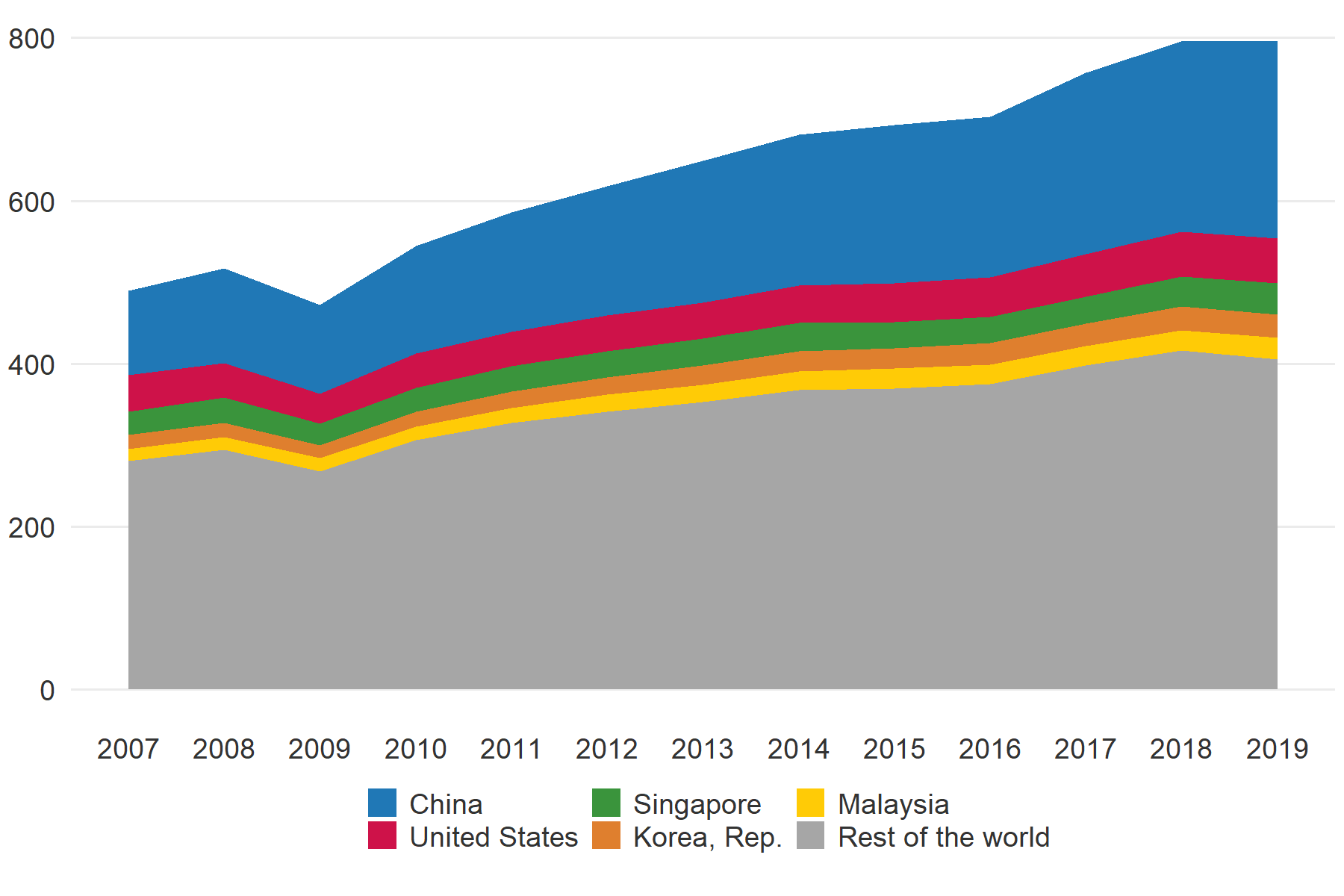


Industry, innovation and infrastructure
Transport at the crossroads: remote rural areas and empty skies
Equal access to reliable transportation is necessary for development and key to equitable and sustained growth. It brings education, health services, and jobs within reach of all communities, expands access to local, regional, and global markets, and helps reduce poverty. To support economic development, SDG 9 focuses on high-quality, reliable, sustainable, and resilient regional and transborder infrastructure. SDG target 9.1 is about bringing affordable and equitable transport access to everyone.
Over the past few decades the pace of global travel has accelerated, and the movement of people and goods has made the world increasingly interconnected. Globally, journeys by air passengers increased from 1.7 billion in 2000 to more than 4.2 billion in 2018. Then the COVID-19 pandemic in 2020 resulted in an abrupt decline in travel worldwide. Air traffic has been severely affected, and the pace of recovery remains uncertain.
Global air travel plunged by over 70 percent in April and May 2020
Total passenger flights, domestic and international
Source: International Civil Aviation Organization & ADS-B Flightaware
In urban areas, where transport infrastructure is typically better than in rural areas, the focus for improvement is transportation quality, congestion, affordability, and equitable access. In rural areas, where transport infrastructure is more limited and in many cases highly inadequate (especially in low- and lower-middle-income countries), the primary goal is providing basic infrastructure such as roads. Without an all-season road—a road usable by motor vehicles year-round—people cannot access essential services and markets.
The Rural Access Index measures the proportion of the rural population who live within 2 kilometres of an all-season road. This is generally considered a reasonable distance (equivalent to a 20–25 minute walk) to access economic activities and participate in social activities. Introduced in 2006, the index was initially calculated based on data from in-person interviews conducted as part of household surveys. The current methodology takes advantage of advances in technology and draws on a broader set of sources, including survey and road network data, which provide more accurate information on road network distribution and road quality. The index, available for over two dozen countries, measures access to sustainable transport for rural populations (SDG indicator 9.1.1).
In both Ethiopia and Nigeria more than 60 million people lack access to an all-season road
Rural Access Index value for access to an all-season road (most recent year available during 2009–18)
Source: World Bank. 2019. Measuring Rural Access: Update 2017/2018. Washington, DC: World Bank Group; World Development Indicators (SP.RUR.TOTL)
Data sources for measuring the Rural Access Index
How can we calculate how many people in rural areas have access to a road in good condition? By answering three questions: Where do people live?; Where are the roads?; What is the quality of the roads?
The components of the Rural Access Index

Population density
Low
High
Eldoret
Meru
NAIROBI
Source: Worldpop. Blank areas have a population density less than 0.1 per cell of 100x100 m.

Population density
Low
High
Eldoret
Meru
NAIROBI
Source: Worldpop. Blank areas have a population density less than 0.1 per cell of 100x100 m.

Eldoret
Meru
NAIROBI
Source: Kenya Roads Board

Eldoret
Meru
NAIROBI
Source: GRUMP

Eldoret
Meru
NAIROBI

Eldoret
Meru
NAIROBI
Take Kenya as an example.
To determine where people live, or the population distribution in rural areas, the Rural Access Index uses WorldPop data.
WorldPop estimates the number of people living in each 100 by 100 square meter on earth using remotely-sensed and geospatial datasets (settlement locations, settlement extents, land cover, roads, building maps, health facility locations, satellite nightlights, vegetation, topography and refugee camps).
Information on the location of roads comes from sources such as government databases, OpenStreetMap, satellite imagery, and global positioning satellite data.
For Kenya, the Kenya Roads Board carried out a Road Inventory Condition survey in 2018, for planning of road maintenance. The survey assessed the type of surface and the condition of approximately 420,000 road segments, covering almost 250,000 kilometres (155,000 miles).
Since the Rural Access Index measures road access for rural populations only, urban areas need to be excluded from the calculation. To separate urban from rural areas, data from the Global Rural-Urban Mapping Project are used.
The Rural Access Index is calculated at the county level in Kenya.
Let's zoom in on one county: Meru
Methodology for measuring the Rural Access Index
Calculating the Rural Access Index

Population density
High
Low
Meru
Source: Worldpop. Blank areas have a population density less than 0.1 per cell of 100x100 m.

Population density
High
Low
Total population
1,545,714
Meru
Source: Worldpop. Blank areas have a population density less than 0.1 per cell of 100x100 m.

Rural population
1,358,849
Meru
Source: Worldpop, GRUMP

Meru
Source: Kenya Roads Board

Meru
Source: Kenya Roads Board

Meru
Source: Kenya Roads Board

Meru

Meru

Meru

544,000
815,000
Meru

40
60
20
80%
Eldoret
Meru
NAIROBI
This is the county of Meru, in central Kenya.
According to the 2019 census, Meru has 1,545,714 inhabitants.
Urban areas are excluded from the Rural Access Index calculation. Approximately 1.36 million people live in the rural areas of this county.
These are all the roads in Meru.
The Rural Access Index estimates the number of people living less than 2 kilometers away from a good quality road. Road quality is measured in terms of road roughness or pavement strength.
Roads are generally considered acceptable if they have few cracks and potholes and can be used both in normal weather as well as in difficult weather conditions (for example, during the rainy season).
All paved road segments in good or fair condition and all other road types classified as being in good condition in the most recent Road Inventory Condition Survey are shown in this map.
These are the 2 kilometer areas along the good quality roads in Meru.
Urban areas are then excluded from these 2 kilometer zones.
To conclude the analysis, the population living in the buffer zones (excluding urban areas) is counted.
In total, about 815,000 people live within less than 2 kilometers from an all-season road. This is about 60 percent of the rural population, so Meru’s Rural Access Index value is 60.
This map shows Rural Access Index values for all counties in Kenya.
The index shows the range from areas that are well served by roads (where at least 80 percent of people are within 2 kilometers of a road) to areas that are relatively cutoff from the world (where at most 20 percent of people are within 2 kilometers of a road).
Many data challenges arise when calculating the Rural Access Index, particularly in poorer countries. While the location and quality of national roads are generally well monitored, data on secondary, tertiary, and unpaved roads are often sparse. More efforts and investment are needed to collect better data on road location and road quality so that countries can use the Rural Access Index to expand access to road networks.
Improved connectivity can result in higher agricultural and firm productivity, greater access to urban markets for producers,and more job opportunities. Good roads are also essential to allow people in rural areas to reach facilities such as schools, hospitals, and administrative services, and improving their overall standards of living.
Learn more about SDG 9: Industry, innovation, and infrastructure
Swipe for the next chart


Notes
- World Bank. 2019. World - Measuring Rural Access: Update 2017/18. Washington, DC. Group. ↩
- Roberts, Peter, K. C. Shyam, and Cordula Rastogi. 2006. “Rural Access Index: A Key Development Indicator.” Transport Papers TP-10. World Bank, Washington, DC. ↩
- WorldPop ↩
- Global Rural-Urban Mapping Project ↩
- Road roughness is measured according to the International Roughness Index. ↩
- World Bank. 2016. Measuring Rural Access: Using New Technologies. Washington, DC. ↩
- Khandker, Shahidur, Zaid Bakht, and Gayatri Koolwal. 2009. “The Poverty Impact of Rural Roads: Evidence from Bangladesh.” Policy Research Working Paper 3875. World Bank, Washington, DC. ↩
- Mu, Ren, and Dominique van de Walle. 2011. “Rural Roads and Local Market Development in Vietnam.” The Journal of Development Studies 47(5): 709–34. ↩





























